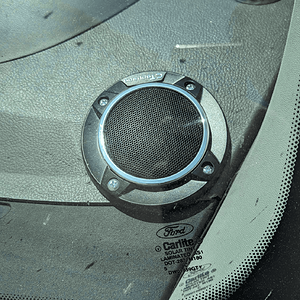So please, if you would, contact the company that held the world record for years and tell them that they are wrong about breaking in their own subwoofers:
No need to contact them. If they had any objective data to back this up they would have it there in their writeup. IMO that whole thing is just a bunch of pseudo science designed to first cover their arse if someone destroys a sub right out the gate and second to try to get people to start off cautious with their new product and feel out its limits. I'm not so convinced by marketing hype especially when it flies in the face of many years of my own experience/observation.
The ability of humans to remember sound and sound intensity is extremely poor, this is well documented. There's no way you're hopping in the car one morning after completing your """break in""" ritual and saying with confidence "Oh wow, this sounds way better and deeper than it did a couple weeks ago".
I defy anybody to show me some actual evidence of this phenomenon. For example 4 identical subs side by side in identical enclosures on identical power, two fresh out the box and the other two having undergone some magic ritual then roll power up until they all break to determine which if either survive more power. Or before and after RTA graphs or SPL measurements of subs after various periods of any magic ritual you feel is going to make an audible difference. Even IF DD has some top secret unicorn tears they use in their soft parts that aren't used in the Sundown and Nuway ultra stiff spider packs I've used that somehow MUST be stretched out a bit before they function without failure, shame on them for not just building a machine that bends them up a bit before assembly. You can buy even the stiffest ones on the market and soften them up noticeably in just a few minutes by just working them back and forth with your hands.
Where did I say anything about changing t/s parameters?
You did not, but ironically the DD writeup you linked did and for some reason they only even mentioned Fs. If you claim some audible change happens at some point, posting before and after TS parameters would be useful data in backing up this claim.
Or is there some more subtle pixie dust they put in those softparts that will make them break prematurely or sound audibly different after some ritual is performed that cannot be measured via TS specs?
Your fart box tunings are so high that you don't even need to break a woofer in because you're playing high notes like any prefab can do.
The double irony here is that I typically build to "DD Box" volume and port ratios.
I've never measured any subs before and after t/s parameters, personally. T/s are relative, you can spot a woofer with no break in time, but the t/s can still show the character of the woofer, regardless.
So do TS parameters not matter at all in box design? If you expect some audible change in output after some period of time or some ritual is performed how do you account for this change when designing a box if any of this change is likely to make an audible difference?
You aren't going to sit here and tell me break in time doesn't make many a sub play music better.
Define "better" and then provide some objective data to back up this claim.
Correct me if I'm wrong, but you aren't the type that goes around playing 25 hz on the streets, are you?
No, nor are DD subs (particularly up to a generation or two ago) the type of subs which really excel for that application in the first place. Now that you've moved the goalpost to """"break in""" only makes an audible difference at 25hz provide some data to back this up. What ritual does Jacob suggest for """break in""" on his X series?
I've seen people blow subs from not letting them break in.
How on Earth can you determine that what they did to break them the first time wouldn't have happened regardless of any ritual you performed with those same woofers before they were abused? How did you determine that the failure wasn't either legitimate manufacturer defect or outright abuse?
So, when your woofer is really stiff, it basically doesn't move enough on the low notes, and that causes excessive heat buildup in the coil.
Can you quantify how much more movement you will get after precisely what ritual is performed that will make such a dramatic difference in thermal power handling? I've worked in the business and seen the same chucklefucks break speakers within minutes of leaving, even after watching them pull across the street, go into the trunk, and crank the "volume knob" on the amps up to max. Stupid people doing stupid **** doesn't mean that happened because they didn't follow some secret ritual, it's because they're bone-heads who have no concept that equipment has limits. Some learn their lesson and use equipment within tolerance afterwards and some do not.
How does this theory account for mechanical failures? Should someone who has """broken in""" their sub be more concerned about over excursion after they have stretched out the suspension some? By how much will this change effect power handling as far as mechanically breaking things at low frequencies if we rely on the stiff suspension to control the cone below tuning?
If break in time isn't a thing, then how is it possible for woofers to start sagging over time?
Post pics of a 20 year old DD sub with spider sagging. The further you try to move the goalposts here arguing with yourself the more you're disproving your own case. The type of driver that is going to sag in 20 years is going to be extremely soft to begin with and will probably change parameters the least from brand new to end of life while the drivers that are built extremely stiff and will stay stiff forever are the ones that openly suggest these special juju rituals.
About 8 or 9 years ago I measured TS parameters of an old Clarion 32" that a friend owns and the TS parameters were within 2-3% identical to published specs from the early 90s. There is also some good data to be found online of full range bookshelf type drivers being measured over a period of several years.
Spiders are fundamentally flexible and that flexibility will change over time,
Nobody has denied this. The question is by how much, over how much time, and at any point will it make either an audible difference or a significant difference in either thermal or mechanical power handling. I originally even offered to share real objective data on measured specs of woofers to help have a serious discussion on the subject and you attacked the very idea before going on to write a page full of conjecture and anecdotal evidence of a bunch of ignorant hoodrats who blow **** up.
Finally, why is it that I can build extremely stiff suspension subs that I can beat on full power within an hour of assembly and DD can't build one that won't fail without some 12-24 hour ritual being performed over it?



